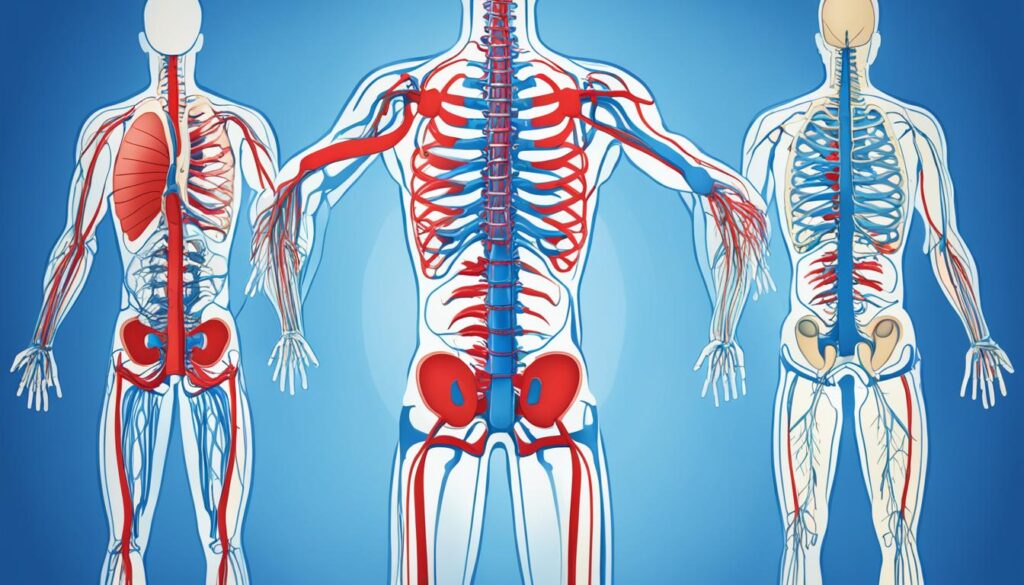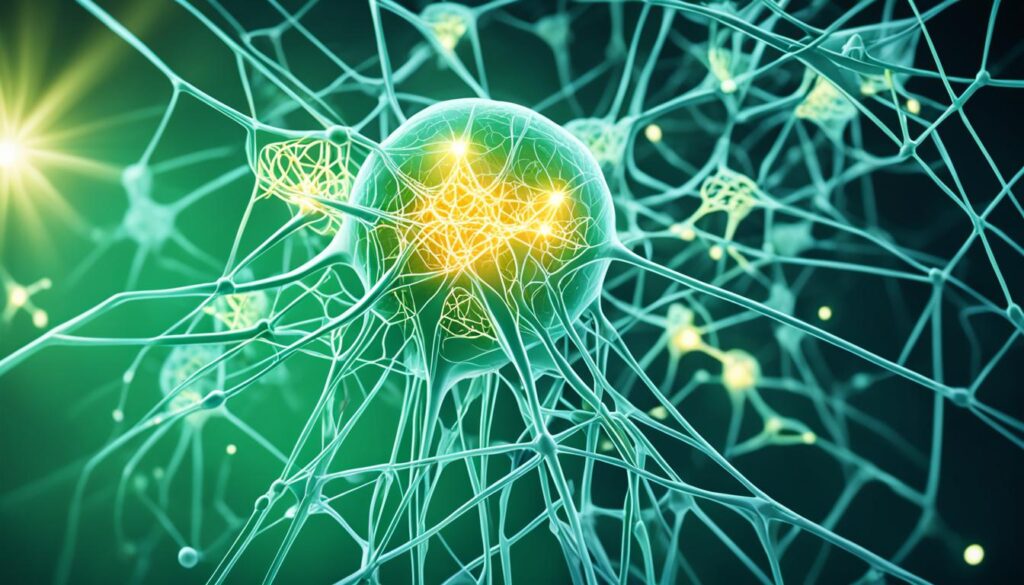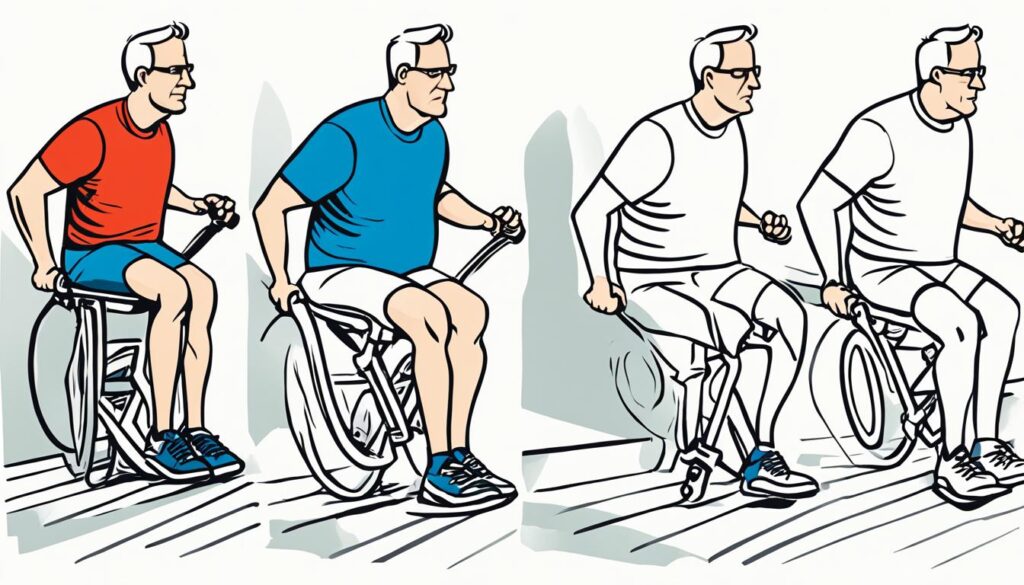Hereditary spastic paraplegia (HSP), or familial spastic paraparesis, is a group of inherited disorders. It causes weakness and stiffness in the legs. Symptoms can worsen over time without getting better.
In early stages, walking may become a little difficult. Stiffness is also common. This usually progresses slowly, making aids like canes or wheelchairs necessary. Diagnosing HSP involves a neurological exam and other tests.
HSP comes in different inheritance forms. Not everyone in a family might show symptoms. But they could carry the gene. The time when symptoms start may vary, depending on the gene. Unfortunately, there are no known cures or ways to slow down HSP. But, muscle relaxers and physical therapy can help some.
Table of Contents
ToggleUnderstanding Hereditary Spastic Paraplegia
Hereditary spastic paraplegia (HSP) is a rare problem passed down in families. It makes leg muscles weak and tight. Over time, these signs can get worse. It’s also called familial spastic paraparesis or Strümpell-Lorrain syndrome.
Definition and Key Features
Around 90% of folks with HSP show only leg problems. They can have weak legs and muscle tightness (spasticity). The other 10% might have more issues. These could include nerve damage, epilepsy, and trouble with balance.
Types: Pure and Complicated Forms
Pure HSP shows up with weak legs and muscle tightness. You might have trouble controlling your bladder. Sometimes, your feet may not feel things properly. Complicated HSP adds more symptoms. This can mean eye issues, nervous system problems, and more.

Symptoms of Hereditary Spastic Paraplegia
HSP’s signs can change a lot, affecting people differently. About 90% face the “pure form.” They mainly struggle with weak legs and muscle stiffness and spasms. The “complicated” form, affecting about 10%, brings more symptoms.
Pure HSP Symptoms
Those with pure HSP often start with weaker legs. They also feel stiffer and have a higher muscle tone. They might find it hard to control their bladder or feel their feet. These issues get worse over time.
Complicated HSP Symptoms
Complicated HSP causes more than leg issues. People could also deal with nerve damage, epilepsy, trouble balancing, poor vision, or thinking problems. What they face can change, based on the type of HSP and their life situation.
What Causes Hereditary Spastic Paraplegia?
The main cause of hereditary spastic paraplegia (HSP) is a genetic issue. Most often, people get a bad gene from one parent. If it’s a more severe type, they might get bad genes from both parents. These genes affect how the nerves in the spine work. Normally, these nerves help control muscle tone and movement in the legs.
Genetic Mutations and Inheritance Patterns
Scientists have found over 80 places in our genes that can cause HSP. The most seen types usually happen when one of the genes passed down is wrong. The main types are from a parent, like SPG4, SPG3A, and SPG6. Less common types come from both parents, found in SPG5, SPG7, and SPG11. Sometimes, extra genetic changes can show up, causing more symptoms.
For those with pure HSP, getting one bad gene starts it. But for the more complex kinds, inheriting bad genes from both parents is what happens. Knowing which gene is bad and how it’s passed helps plan for the disease. It shows what might happen and how best to treat it.

What is hereditary spastic paraplegia
Hereditary spastic paraplegia is found through a detailed clinical check and recognizing its signs. It’s crucial to eliminate other conditions first, like multiple sclerosis or cerebral palsy.
Diagnostic Process and Tests
Tests for this condition often include MRI scans on the brain and spine, along with genetic testing. This process specifically aims to confirm if someone has HSP and to find what genetic changes may be the cause.
Ruling Out Other Conditions
Recognizing HSP helps doctors plan for its effects and how to manage it for each person. It also ensures other possible disorders are ruled out, like those causing leg weakness.

Managing Hereditary Spastic Paraplegia
Hereditary spastic paraplegia (HSP) has no cure, but several treatments can help. These treatments aim to make life better for people with this rare condition. They work to lower muscle stiffness, keep muscles strong, and support more independence.
Treatment Options
The use of muscle relaxants can be quite helpful. Medicines like baclofen, tizanidine, and botulinum toxin (Botox) injections target tight muscles. This helps ease stiffness and movements that you can’t control.
Physical therapy is another key part of managing HSP. Working with a physical therapist regularly keeps your muscles strong. It also helps you move better, which keeps you doing things on your own.
Physical Therapy and Rehabilitation
Physical therapy for HSP often focuses on leg muscle strength and stretching. This helps prevent muscles from getting too tight. It also includes balance exercises to lower the chance of falling. Occupational therapy is also important. It teaches you how to adjust your home and daily activities so you can be more independent.
If walking is hard, your doctor might suggest using braces or shoe inserts. These help you walk better and stop your muscles and joints from getting worse. For some, surgeries like muscle lengthening might be needed to help with severe stiffness or tightness.
Treating HSP needs a team. This includes doctors, therapists, and sometimes surgeons. They work together to come up with a plan just for you. With this team, living with HSP can be more manageable, and life can get better.
Complications and Outlook
People with HSP might deal with various issues as it gets worse. Their calf muscles can get shorter and tougher. This makes moving harder. They could also get cold feet and feel very tired.
Back and knee pain are common, as are stress and feeling sad.
Potential Complications
How HSP affects someone can differ a lot. Some may need a wheelchair, but others might not. People with hereditary spastic paraplegia usually live as long as others.
However, if the condition is more complex, life expectancy might change. It all depends on the symptoms and how bad they are.
Prognosis and Life Expectancy
Treatment can make a big difference for HSP. It involves physical therapy and other care strategies. By working closely with a health team, people can improve their health.
Regular check-ins with neurologists and physical therapists are key. They help to make a care plan that meets each person’s unique needs.
Conclusion
Hereditary spastic paraplegia (HSP) is a rare disorder that affects the legs. It causes them to weaken and stiffen over time. Sadly, there is no cure for HSP yet.
But there’s hope. Those with HSP can work with their doctors and therapists. They can create a plan to keep their independence and quality of life.
It’s important to know the different types of HSP and their genetic causes. This helps in providing the best care. Researchers are working hard to find new ways to diagnose and treat HSP.
By keeping up with the latest in HSP, you can play an active part in your health. Work closely with your healthcare team. This way, you can live a full life despite HSP.
FAQ
What is hereditary spastic paraplegia?
Hereditary spastic paraplegia (HSP) is a group of inherited disorders. It causes leg weakness and stiffness, which get worse over time.
What causes hereditary spastic paraplegia?
HSP comes from genetic mutations. These mutations affect the nerves in the spine. This leads to muscle tone and movement problems in the lower body.
What are the different types of hereditary spastic paraplegia?
HSP has two main forms. There’s the “pure” form with mostly leg issues. And the “complicated” form that has more neurological symptoms.
What are the symptoms of hereditary spastic paraplegia?
In pure HSP, you may see leg weakness, muscle stiffness, and bladder problems. Complicated HSP adds more neurological issues on top of these.
How is hereditary spastic paraplegia diagnosed?
Doctors diagnose HSP by checking for typical symptoms. They also use tests like MRIs and sometimes genetic testing.
How is hereditary spastic paraplegia treated?
There’s no cure for HSP, but treatments can help. These include muscle relaxants, therapy, and surgery in severe cases.
What is the prognosis for people with hereditary spastic paraplegia?
The outcome for HSP patients varies. With proper symptom management, some people can live without severe impact on their lives.
What is the role of physical therapy in hereditary spastic paraplegia?
Physical therapy is important for HSP patients. It helps keep muscles strong, improves movement, and maintains flexibility.
Source Links
- https://www.nhs.uk/conditions/hereditary-spastic-paraplegia/
- https://www.ncbi.nlm.nih.gov/books/NBK1509/
- https://www.ninds.nih.gov/health-information/disorders/hereditary-spastic-paraplegia
- https://rarediseases.org/rare-diseases/hereditary-spastic-paraplegia/
- https://www.ncbi.nlm.nih.gov/pmc/articles/PMC6349696/
- https://www.ncbi.nlm.nih.gov/pmc/articles/PMC8835766/
- https://www.ncbi.nlm.nih.gov/pmc/articles/PMC4045499/
About The Author

This article is medically reviewed by Dr. Chandril Chugh, Board-Certified Neurologist, providing expert insights and reliable health information.
Dr. Chandril Chugh is a U.S.-trained neurologist with over a decade of experience. Known for his compassionate care, he specializes in treating neurological conditions such as migraines, epilepsy, and Parkinson’s disease. Dr. Chugh is highly regarded for his patient-centered approach and dedication to providing personalized care.
→ Book a consultation to discover which remedies suit your needs best.




